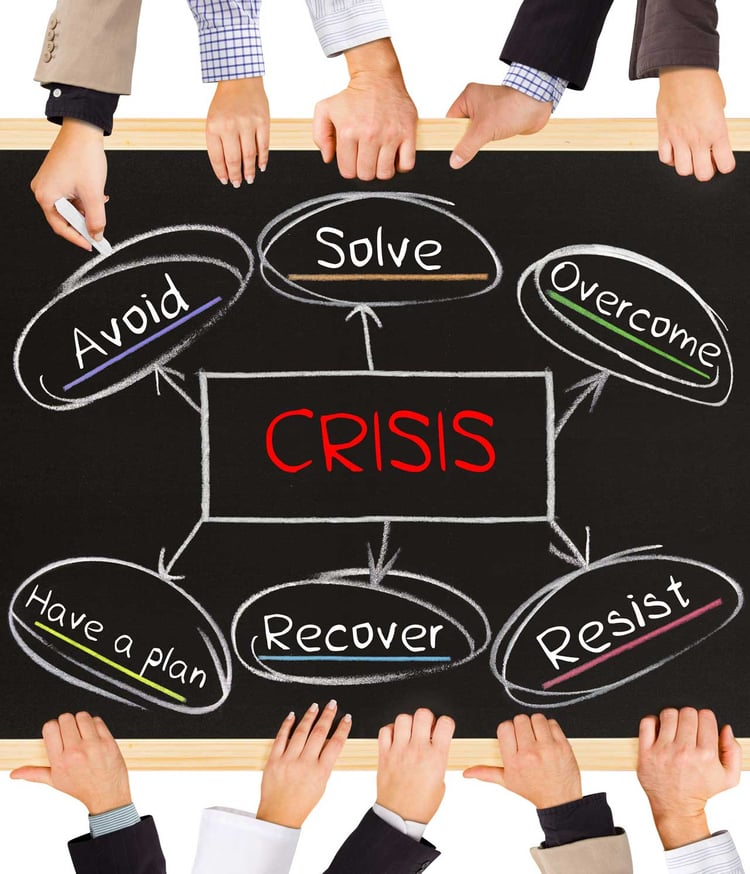Who Could See That Coming? Everyone But You!
 Let’s look at a one week’s selection of issues faced by major organizations (the week beginning May 29) and played out in the full glare of traditional media with added spice and commentary from millions across social media.
Let’s look at a one week’s selection of issues faced by major organizations (the week beginning May 29) and played out in the full glare of traditional media with added spice and commentary from millions across social media.
- British Airways’ power surge which knocked out its IT system and grounded hundreds of flights for days – and the weak response from the airline.
- Hackers successfully breached Chipotle’s cyber security to acquire customer financial details – just when we were beginning to forget the food poisoning.
- Financial services company USAA withdrew its ads from the Sean Hannity Show, but then returned after expressions of outrage from its customers – which suddenly made them part of the story, completely unnecessarily.
Who could have predicted those issues, right?
In fact, I would argue that every one of these issues should have been identified and mapped out in the organizations’ crisis plan way ahead of the worst happening in May 2017.
IT malfunctions, cyber security and advertising policy are mainstream when it comes to issues management.
This blog concludes our series looking at the best practice content for a crisis plan built to succeed in the digital-age.
As I noted in previous blogs, from my experience, the key areas of a state-of-the-art crisis plan are:
- Understand the difference between an issue and a crisis.
- Clear and roles & responsibilities for the crisis team.
- Identification and tracking of the issues.
- Comprehensive worst case scenario planning.
In previous blogs, we looked at issues and crisis and how a plan must differentiate between the two.
We also examined the roles and responsibilities of the crisis team.
This time we look more closely at managing specific issues – identifying and tracking them and building comprehensive worst-case individual scenario plans for when things escalate.
At least once a year, every organization should go through an exercise, involving representatives from all functions and geographies, to map out what issues might be looming that could harm the business or its reputation.
Some issues are the same year after year – such as natural disasters, workplace accidents, IT failures, corporate malfeasance.
Other issues emerge or grow stronger depending on changing times and cultural norms – discrimination, consumer data privacy, cyber security, corporate cultural fissures have become stronger threats in recent times.
Once you have your list of the issues that are most likely or most worrisome, you need some way to track them – to keep on top of online conversations, social media posts, newspaper and broadcast coverage, market sentiment, emerging policy and competitor activity.
Fortunately, there are plenty of software tools that help make this task easier – though the data gathered will always need analysis and interpretation from an experienced real-life person.
Those issues that you identified as most threatening go into your state-of- the-art crisis plan.
For each of the most important or threatening issues, you prepare a detailed scenario plan complete with messaging, escalation plans, third party resources and communications strategies.
Reflecting our earlier blog about the difference between an issues and crisis, these scenario plans are prepared at three levels:
- Emergent issue: With potential significance to larger audience or threat to the organization. Unless an escalation process is triggered, at this level these issues are largely managed within the Communications Team.
- Escalating issue: A growing threat to become a visible crisis or have impact on the organization’s brand or business operations. At this point the entire crisis management team would become involved.
- Significant threat: High profile with wide visibility and is beginning to cause harm to reputation or business. Some crises are Red from the onset. At this level, all members of the crisis response team would be involved, including senior management on the crisis strategy team.
Additional individual scenario response plans can be added as new issue arise during the year – or circumstances make old issue more threatening.
Once you have these scenario response plans written, to make sure you can access and activate them in a hurry when the worst happens, the content of your plans need to be instantly accessible via a mobile crisis app like RockDove Solution’s In Case of Crisis, now deployed by more than 750 organizations.
Now, you can have confidence that your organization’s crisis response will be conducted at the speed of social media.
How good do you feel that your current plan is up to the task?










